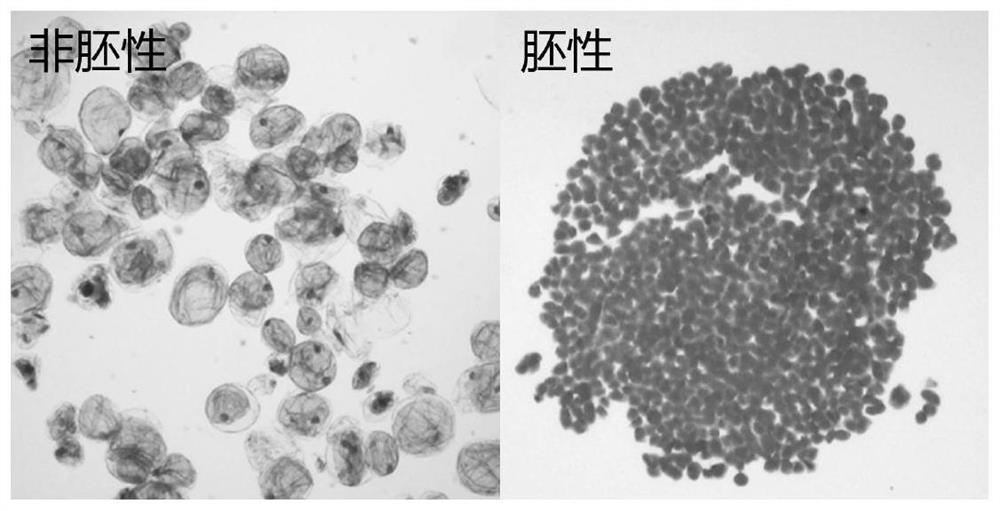A method for improving the induction effect of agapanthus body embryos
A technique for embryo seedlings and seedlings, which is applied in the field of improving the induction effect of Agacia japonica body embryo seedlings, can solve the problems of embryo abortion, the number of induced mature embryos is small, the number of somatic embryo seedlings is low and the like, and the number of mature seedlings can be increased and reduced. The occurrence of deformed seedlings and the effect of hormone regulation optimization
- Summary
- Abstract
- Description
- Claims
- Application Information
AI Technical Summary
Problems solved by technology
Method used
Image
Examples
Embodiment 1
[0032] A method for improving the induction effect of agapanthus body embryos, comprising the steps of:
[0033] (1) Material collection of explants: during the flowering period in May to June, uncracked small flower buds of Agapanthus 4 to 5 years old were taken, and disinfected on an aseptic operating table (firstly treated with 75% (v / v) ethanol for 1 min) , followed by ddH 2 O rinsed 4 times, then disinfected with 2% sodium hypochlorite for 5min), and then treated with ddH 2 0 rinse 4 times, blot the moisture on the surface of the small flower buds with sterile filter paper, then cut the small pedicel explants, and cut the small pedicel explants into small sections of 0.7~1.0cm;
[0034] (2) Callus induction: Take 0.7-1.0 cm small pedicel explants and inoculate them in the callus induction medium in a flat state, and culture them in the dark at 25°C for 15 days, white translucent callus can be seen ( figure 1 It is an anatomical microscope observation figure after the s...
PUM
 Login to View More
Login to View More Abstract
Description
Claims
Application Information
 Login to View More
Login to View More - R&D Engineer
- R&D Manager
- IP Professional
- Industry Leading Data Capabilities
- Powerful AI technology
- Patent DNA Extraction
Browse by: Latest US Patents, China's latest patents, Technical Efficacy Thesaurus, Application Domain, Technology Topic, Popular Technical Reports.
© 2024 PatSnap. All rights reserved.Legal|Privacy policy|Modern Slavery Act Transparency Statement|Sitemap|About US| Contact US: help@patsnap.com










